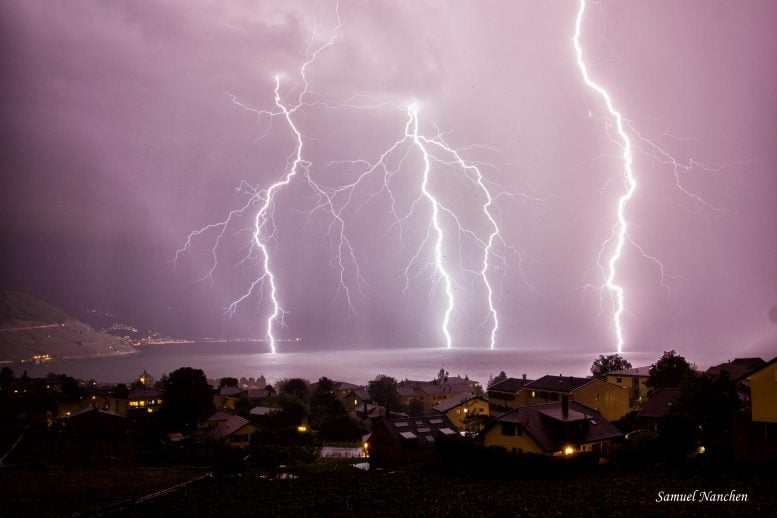
As the power of extreme weather events increase with climate change, an international team of 39 scientists warn that lakes around the world may dramatically change, threatening ecosystem health and water quality. And the scientists reports that our limited understanding of how lakes — especially algae at the base of food webs — may respond to more-extreme storms represents a knowledge gap that increases the risk. Credit: Samuel Nanchen
What We Don’t Know (About Lakes) Could Hurt Us
As the power of extreme weather events increase with climate change, a team of scientists warn that lakes around the world may dramatically change, threatening ecosystem health and water quality.
And the international team reports that our limited understanding of how lakes — especially algae at the base of food webs — may respond to more-extreme storms represents a knowledge gap that increases the risk.
The team of 39 scientists from 20 countries on four continents investigated what is currently known about how lake ecosystems respond to extreme storm events. The scientists found they cannot confidently predict how lakes will respond to the more frequent and intense storms that are expected in a warming world.
“If extreme weather events significantly change carbon, nutrient, or energy cycling in lakes, we better figure it out quickly,” said Jason Stockwell, an aquatic ecologist at the University of Vermont who led the new research, “because lakes can flip, like a lightbulb, from one healthy state to an unhealthy one — and it can be hard or impossible to flip them back again.”
The new study focused on phytoplankton — microscopic plants commonly known as algae. “Phytoplankton are of particular concern because they are the base of the food web,” said Stockwell, “and a critical driver of water quality.”
The new study, “Storm Impacts on Phytoplankton Community Dynamics in Lakes,” was published in the journal Global Change Biology on March 5, 2020.
Storms Ahead
It is well known that extreme weather events damage property, infrastructure, and the environment, including freshwater resources that are critical to human health. However, lakes are especially sensitive to storm events because they experience storms directly and receive storm runoff from throughout their watersheds. Runoff includes sediments, nutrients, microplastics, and much more.
“We have a good idea of how lakes physically respond to storms: the water column mixes, water temperature changes, and sediments can be churned up from the bottom or delivered by rivers and streams to make the lake more turbid,” Stockwell said. “But the physical response of the lake is just a part of the story. The biological impact of storms on phytoplankton and other plants and animals is fundamental to how lakes behave — and, as our study reveals, poorly understood.”
In a search of thousands of scientific articles from around the world, the scientists found just 31 studies on 18 lakes that connected storms to freshwater lake conditions, and then to phytoplankton. Not only was the information sparse, but the few available findings were inconsistent. It became clear that the scientific community has a poor understanding of how phytoplankton respond to storms, or how their responses may differ by storm types, across different lakes, or even at different times of year.
New Knowledge Needed
The scientists call for a collaborative, multi-disciplinary effort by modelers, limnologists, watershed experts and other scientists, through research coordination networks — such as the Global Lake Ecological Observatory Network (GLEON) — to develop and advance a research framework of storm impacts on phytoplankton.
The team of scientists suggest several research directions including integrating watershed and lake physical models with biological models to better predict phytoplankton responses to storm-induced changes to lake conditions. The scientists also recommend continued and expanded long-term lake monitoring programs, coupled with networks of electronic high-frequency sensors, to evaluate short-term changes, emergent patterns, and long-term responses of lakes and water quality to storm events.
Similar research is also required for zooplankton, tiny grazers a little smaller than a rice grain that are essential food for fish. The goal is to better understand the pathways by which storms impact watershed-scale processes and plants and animals in lakes.
“We must quickly learn more — so we can better respond to the very real and pressing threat of climate change on lakes around the world,” said Stockwell, director of UVM’s Rubenstein Ecosystem Science Laboratory. “Without healthy lakes, we are sunk,” he said.
Reference: “Storm Impacts on Phytoplankton Community Dynamics in Lakes” by Jason D. Stockwell, Jonathan P. Doubek, Rita Adrian, Orlane Anneville, Cayelan C. Carey, Laurence Carvalho, Lisette N. De Senerpont Domis, Gaël Dur, Marieke A. Frassl, Hans‐Peter Grossart, Bas W. Ibelings, Marc J. Lajeunesse, Aleksandra M. Lewandowska, María E. Llames, Shin‐Ichiro S. Matsuzaki, Emily R. Nodine, Peeter Nõges, Vijay P. Patil, Francesco Pomati, Karsten Rinke, Lars G. Rudstam, James A. Rusak, Nico Salmaso, Christian T. Seltmann, Dietmar Straile, Stephen J. Thackeray, Wim Thiery, Pablo Urrutia‐Cordero, Patrick Venail, Piet Verburg, R. Iestyn Woolway, Tamar Zohary, Mikkel R. Andersen, Ruchi Bhattacharya, Josef Hejzlar, Nasime Janatian, Alfred T. N. K. Kpodonu, Tanner J. Williamson and Harriet L. Wilson, 5 March 2020, Global Change Biology.
DOI: 10.1111/GCB.15033
Authors and Affiliation:
- Jason D. Stockwell, University of Vermont, Rubenstein Ecosystem Science Laboratory, USA
- Jonathan P. Doubek, University of Vermont, Lake Superior State University, USA
- Rita Adrian, Leibniz Institute of Freshwater Ecology and Inland Fisheries, Germany
- Orlane Anneville, University Savoie Mont Blanc, INRAE, France
- Cayelan C. Carey, Virginia Tech, USA
- Laurence Carvalho, UK Centre for Ecology & Hydrology
- Lisette N. De Senerpont Domis, Netherlands Institute of Ecology
- Gaël Dur, Shizuoka University, Japan
- Marieke A. Frassl, Griffith University, Australian Rivers Institute
- Hans-Peter Grossart, Leibniz Institute for Freshwater Ecology and Inland Fisheries, Potsdam University, Germany
- Bas W. Ibelings, Department F.-A. Forel for Environmental and Aquatic Sciences, Switzerland
- Marc J. Lajeunesse, University of South Florida, USA
- Aleksandra M. Lewandowska, Tvärminne Zoological Station, Finland
- María E. Llames, Laboratorio de Ecología Acuática; Instituto Tecnológico Chascomús, Argentina
- Shin-Ichiro S. Matsuzaki, National Institute for Environmental Studies, Japan
- Emily R. Nodine, Rollins College, USA
- Peeter Nõges, Estonian University of Life Sciences
- Vijay P. Patil, US Geological Survey
- Francesco Pomati Swiss Federal Institute of Water Science and Technology
- Karsten Rinke, Helmholtz-Centre for Environmental Research, Germany
- Lars G. Rudstam, Cornell University, USA
- James A. Rusak, Ontario Ministry of Environment, Conservation and Parks, Queen’s University, Canada
- Nico Salmaso, Fondazione Edmund Mach, Italy
- Christian T. Seltmann, Leibniz Institute of Freshwater Ecology and Inland Fisheries, Germany
- Dietmar Straile, University of Konstanz, Germany
- Stephen J. Thackeray, UK Centre for Ecology & Hydrology
- Wim Thiery, ETH Zurich, Switzerland; Vrije Universiteit Brussel, Belgium
- Pablo Urrutia-Cordero, Uppsala University, Sweden; Helmoltz Institute for Functional Marine Biodiversity, Carl-von-Ossietzky University, Germany
- Patrick Venail, Universidad de Ingenieria y Tecnologia, Peru
- Piet Verburg, National Institute of Water and Atmospheric Research, New Zealand
- R. Lestyn Woolway, Dundalk Institute of Technology, Ireland
- Tamar Zohary, Israel Oceanographic & Limnological Research
- Mikkel R. Andersen, Dundalk Institute of Technology, Ireland
- Ruchi Bhattacharya, University of Waterloo, Canada
- Josef Hejzlar, Biology Centre of the Czech Academy of Sciences
- Nasime Janatian, Estonian University of Life Sciences
- Alfred T.N.K. Kpodonu, Research Foundation, City University of New York, USA
- Tanner J. Williamson, Miami University, USA
- Harriet L. Wilson, Dundalk Institute of Technology, Ireland

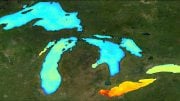
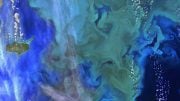

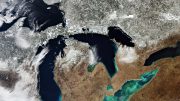
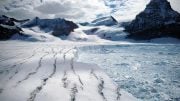
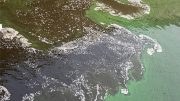

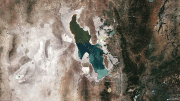
Be the first to comment on "Scientists From 20 Countries Warn of Risk to Lakes and Water Quality as Extreme Weather Increases"